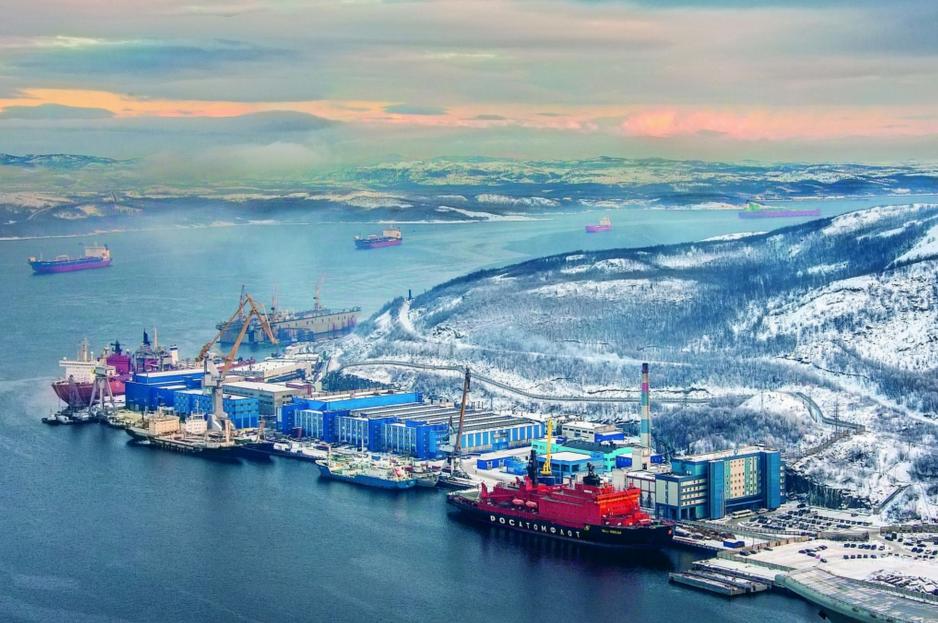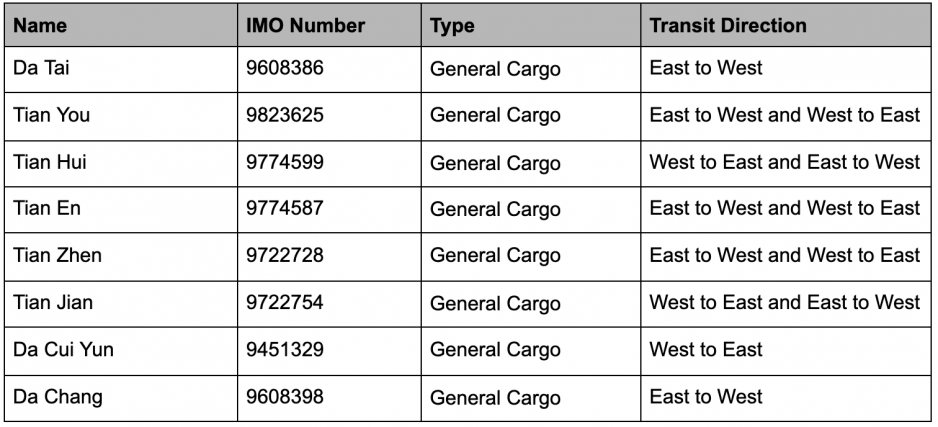Russia Begins Construction on Fifth Nuclear Icebreaker as Arctic Sees Record Shipping Traffic

Rosatomflot nuclear icebreaker base in Murmansk. (Source: Courtesy of Rosatomflot)
Shipping activity in the Arctic continues to grow unabated even as shipping traffic in other parts of the world saw declining volumes as a result of the Covid-19 pandemic. Russia’s Northern Sea Route saw record cargo volume and transits and the country began construction on another nuclear icebreaker, the fifth of the Arktika-class.
Exports of Russian oil and natural gas resources from the Arctic continue to drive increases in shipping activity in the region. In addition, Novatek’s construction of its second liquified natural gas (LNG) plant, Arctic LNG 2, and associated infrastructure including a new port saw a large inflow of construction materials and prefabricated elements into the Kara Sea.
Additional traffic arose from Chinese shipping company COSCO sending at least eight vessels through the Arctic this year matching its efforts from previous years.
To ensure year-round access to Russia’s main Arctic shipping lane, the Northern Sea Route, the country continues the construction of new nuclear icebreakers and the modernization of its fleet. Construction on the fifth Arktika-class nuclear icebreaker, the most powerful icebreakers ever designed, began at the Baltic shipyards in St Petersburg last week.
“We have successfully overcome the obstacle of replacing the existing nuclear icebreakers with new, more powerful and modern ones, without disrupting large projects under implementation in the Arctic. New investors can confidently start their projects since the nuclear-powered icebreaking capacity will be sufficient for the next 40 years,” says Vyacheslav Ruksha Deputy Director General of Rosatom, Russia’s state nuclear energy corporation.
Five Arktika-class nuclear icebreakers for next 40 years
The inaugural vessel of this new generation of icebreakers, Arktika, entered into service this year and already completed escorting voyages along the NSR. The second and third icebreaker of the type, Sibir and Ural, have been launched and are awaiting commissioning in 2021 and 2022.
The fourth vessel, Yakutia, was laid down in May 2020. Together the five Arktika-class icebreakers will provide icebreaking service along the NSR to ensure year-round navigation in the western reaches of the route. With a dual-draft design the vessels can operate in both the deeper waters of the Arctic as well in the mouth of the Yenisei estuary and Ob Bay.
“Nuclear-powered icebreakers of the project 22220 [Arktika-class] will become the basis of a modern nuclear icebreaker fleet,” explains Mustafa Kashka, Director General of FSUE Atomflot, operator of the country’s nuclear icebreakers.
In order to ensure open shipping lanes in the eastern part of the NSR, especially the East Siberian Sea, Russia began construction on an even more powerful nuclear icebreaker, the LK-100 class, in 2020. By around the middle of the decade Rosatomflot will have replaced its entire fleet of aging nuclear icebreakers with modern and even more capable vessels.
Icebreaking services are essential to allow the year-round transport of Russian crude oil and natural gas from the Arctic to markets in Europe and Asia.
Steady increase in shipping traffic
As in previous years the Arctic saw continued increase in shipping traffic. More than 30m tons of cargo passed through the waters of the NSR. Cargo traffic is mainly driven by oil and natural gas exports, with liquified natural gas (LNG) accounting for almost 20m tons.
The route also saw a record-number of transits from Asia to Europe and vice versa. The Center for High North Logistics counted 62 transits. The NSR Administration also received more than 1000 applications for permits to travel along the route from ship owners. This compares to 635 permit requests seven years ago.

Number of applications for NSR permits, 2013-2020. (Source: Northern Sea Route Administration)
As in previous years, COSCO shipping company of China was the busiest international operator along the NSR after Russian-flagged vessels. In 2020, the company received permits for eight of its vessels to travel across the NSR in one or both directions.

NSR permits for COSCO ships in 2020. (Source: NSR Information Office, NSR Administration)
More than 1700 vessels, ranging from fishing vessels to large LNG carriers and cruise ships, traveled in Arctic waters in 2020. The increase in traffic has also prompted the International Maritime Organization to consider and vote on a ban on heavy fuel oil.
A final vote on the ban is expected in June 2021. Environmental advocates have critcized the ban as too weak giving exemptions to operators from Arctic states until 2029.
More challenging ice conditions in the Canadian Arctic resulted in a reduction of transit traffic compared to last year. The Northwest Passage saw only eight transits compared to 27 such voyages last year. In fact, a number of ships decided to travel from the Canadian Arctic across the North Atlantic to utilize the NSR on their journey to Asia.
At least five ships, including three by Nordic Bulk Carriers, departed from Baffinland’s Milne Port with iron ore destined for Asia and utilized the unconventional routing with the NSR.


